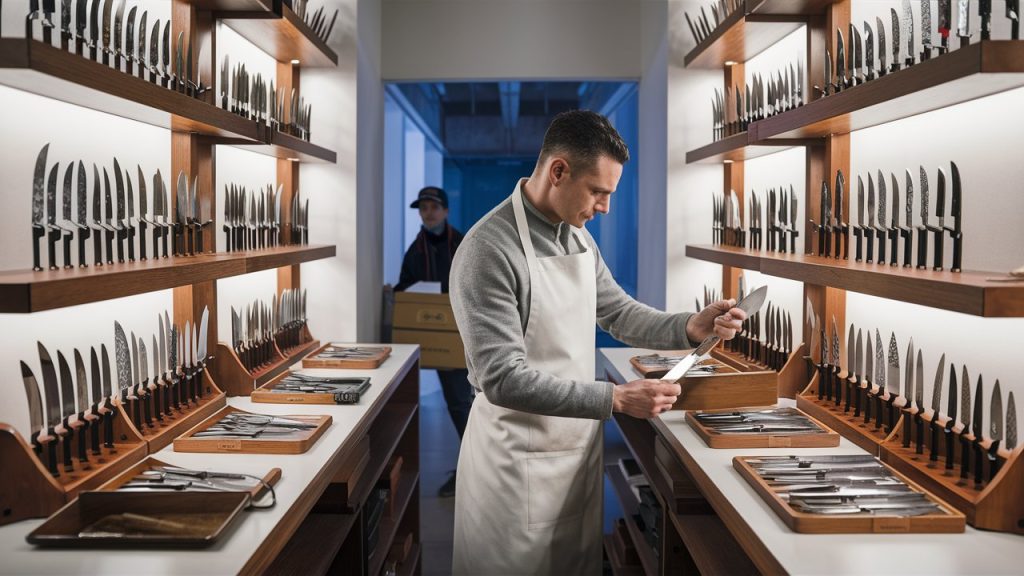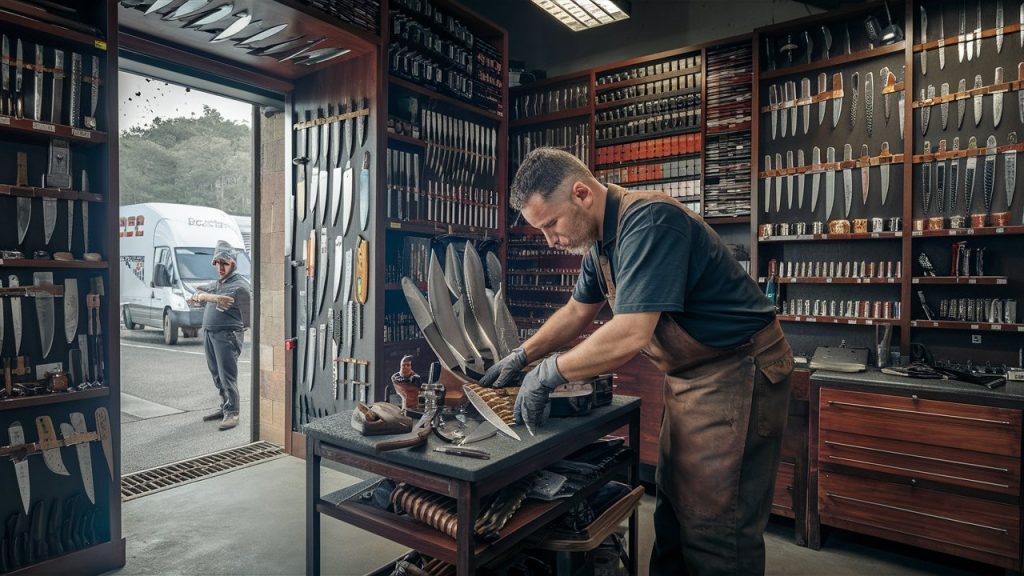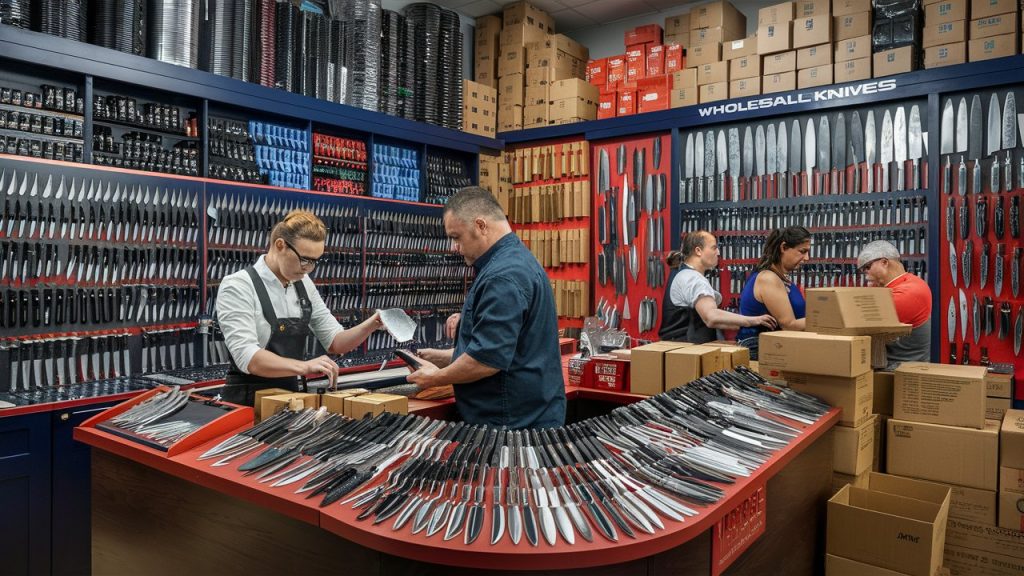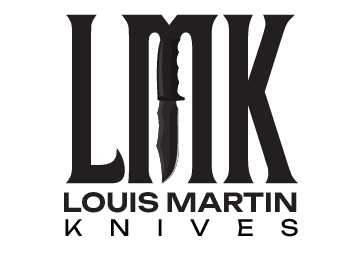- Order tracking
- Wishlist
Investing in wholesale knives may be a thrilling adventure, particularly in a market where demand is present across multiple industries, such as outdoor enthusiasts and kitchen supply businesses. Selling bulk knives is appealing since it allows you to serve a wide variety of clients, such as retailers, hobbyists, collectors, and chefs. However, entering this industry demands a firm grasp of the foundations. It might be difficult to navigate this profession without the necessary information.

Before beginning your wholesale knife sales, it is essential to check the sector you are entering. Several factors, including trends in cooking, outdoor activities, and even collectibles, have an impact on the market for knives, especially when it comes to wholesale volumes. You must decide which market niche you wish to focus on as a seller.
Chef knives, paring knives, and other culinary necessities, for example, can be your main focus if you’re going after kitchen supply companies. However, if outdoor shops are your target market, you may want to carry multi-tools, hunting knives, and pocket knives. You may better customize your offerings to fit the needs of your target audience by being aware of the current demand.
Knowing what the competition is already offering will help you position your company to provide something special. Discovering your market niche will provide you with a competitive advantage, whether it’s via more affordable prices, greater customer support, or a larger selection of goods.
You must make sure that your company complies with all legal standards before you begin selling wholesale knives. Getting the required business licenses and permissions is part of this. Depending on where you live, different licenses may be needed, so it’s important to find out what your local government requires.
You might also need to follow laws of knives in addition to regular business licenses, especially if you plan to sell any kinds of blades that are forbidden or deemed dangerous. These standards must be followed to prevent future legal problems.
Knife regulations might be complicated, particularly if you’re selling them across state lines or even abroad. You must be aware of both federal and state laws governing the sale of knives. You should be aware of state laws about the selling of specific types of knives, such as switchblades and butterfly knives while establishing your product offerings.
need you intend to sell wholesale knives internationally, you need also be aware of any rules that may apply to your business internationally. If you want to grow your business worldwide, you must conduct extensive study because different nations have different laws governing the import and selling of knives.
Locating trustworthy suppliers is one of the most important elements in launching a wholesale knife business. benefits The things you sell will be judged by the quality of your suppliers, so pick them wisely. Start by looking up possible suppliers online, going to trade exhibitions, or getting referrals from colleagues in the same field.
Think about things like product quality, cost, minimum purchase quantities, and delivery schedules when screening potential suppliers. Knowing the terms and conditions of doing business with each supplier is also crucial. Make sure you understand things like warranties, return guidelines, and payment conditions.
Establishing solid bonds with your manufacturers and suppliers is essential to your company’s long-term success. Stronger partnerships can result in more favorable conditions, priority access to new items, and cheaper prices. Pay your bills on time, communicate clearly and consistently, and show consideration for their business needs to cultivate these connections.

Selecting a business model is essential when starting a wholesale knife company. The three most used models are dropshipping inventory holding, and hybrid approaches.
With drop shipping, you may sell goods without keeping stock on hand. Rather, your supplier sends goods straight to your clients. Although there is less of an initial outlay of funds with this technique, profit margins may suffer.
Buying goods in bulk and keeping them in storage until they are sold is known as inventory holding. Although this strategy demands a large initial investment and storage space, it offers you more control over your goods.
With a hybrid approach, you can provide a wider choice of products without devoting a significant amount of resources to inventory by combining aspects of dropshipping and inventory holding.
Since your brand is what makes you stand out from the competition, creating a distinctive brand identity is crucial. Choosing a name, logo, and general style that captures the essence of your company’s character and ideals is part of this.
Establishing your company’s position in the industry is also very important. Do you sell expensive knives at a premium or do you have more reasonably priced options? To draw in the proper clients, your branding and positioning should complement each other. When creating your brand message, take into account how you want your target audience to perceive you.

One of the most crucial elements of managing a profitable wholesale knife business is pricing. You must take several things into account when setting prices, such as the cost of goods, overhead costs, and targeted profit margins. To enable your customers, the retailers, to mark up the price and still turn a profit, the best wholesale knives are usually priced lower than retail.
Make sure to factor in all of your expenses when determining your pricing, such as shipping, storage, and any necessary taxes or levies. Striking a balance between competitive pricing and preserving healthy profit margins should be your aim.
Pricing has the power to build or ruin your company in a cutthroat industry. Make sure your prices are competitive enough to turn a profit, but also keep an eye on what your rivals are charging. To encourage greater purchases, think about providing loyalty programs for loyal customers or discounts for bulk buys.
Regularly reviewing and modifying your price in light of shifting market conditions and cost fluctuations is also crucial. Maintaining profitability and being competitive can be achieved by implementing a flexible pricing strategy.
Every business needs to have a strong internet presence. Begin by building a polished website that shows your items and facilitates simple order placement for clients. Use e-commerce sites such as Amazon or Shopify to expand your customer base.
Another effective marketing option for your wholesale knives is social media. Social media sites such as Facebook, YouTube, and Instagram let you promote your goods, interact with prospective buyers, and increase brand recognition. Take into consideration employing content marketing techniques, like blogging or creating instructional videos, to inform your audience and position yourself as an authority in the knife sector.
Reaching your target market requires choosing the appropriate sales channels for your wholesale knives. You have the option of using third-party markets like Amazon or eBay or selling directly to customers via your website. When choosing a channel, keep in mind your objectives and available resources as each one has pros and downsides.

Effective inventory control is necessary for your wholesale knife company to succeed. Make sure you have enough products to meet demand without going overboard by keeping an eye on your stock levels. You may track sales, keep an eye on stock levels, and place product reorders as needed by using inventory management software.
Having a strategy in place for handling excess or slow-moving goods is also crucial. To move these things rapidly, think about providing specials or discounts.
The process of packing and sending goods to your clients is called order fulfillment. Keeping customers satisfied requires effective fulfillment. Ensure timely delivery by partnering with reputable logistics firms and safeguarding your products with secure packaging to prevent damage during transit.
think about providing a variety of shipping options. For instance, while some clients might be ready to pay more for faster shipment, others might choose a less expensive choice.
A successful wholesale knife business depends on satisfied customers. By offering outstanding customer service, you can attract repeat business and develop a devoted clientele. Ensure that clients can readily contact you with any inquiries or concerns, and that you can handle any problems in a timely and professional manner.
It’s also critical to handle complaints, refunds, and returns with caution. Go above and above to make sure your customers have a great experience because they are more likely to refer business to others when they are satisfied.
Communicate with your clients frequently using social media, email newsletters, and other platforms to inform them about events, promotions, and new items. In a crowded market, building a community around your business might help you stand out.
Even though it requires careful planning and execution, launching a wholesale knife company could be quite profitable. If you conduct market research, follow rules, find reliable suppliers, and use effective marketing and sales strategies, you may build a profitable company that meets the needs of your customers.

Justin
Typically replies within minutes
Feel Free to ask any question related to Wholesale query.
WhatsApp Us
🟢 Online
WhatsApp us